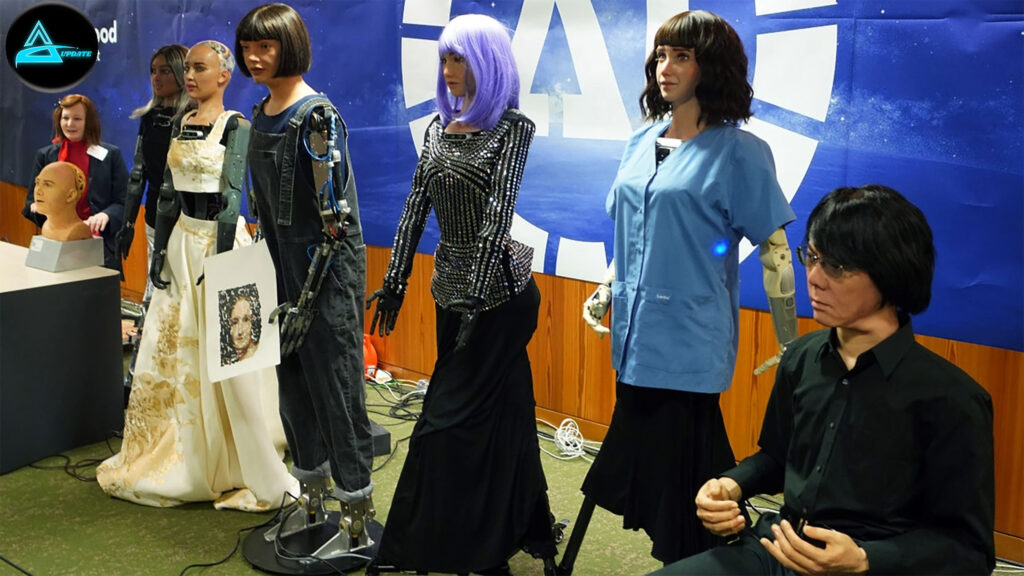Artificial intelligence (AI) constantly evolves, but the introduction of Water-Powered AI Humanoids marks a groundbreaking step forward. Combining sustainability, cutting-edge AI, and innovative energy solutions, this technology is poised to redefine robotics and eco-conscious engineering.
In this blog, we’ll explore water-powered AI humanoids’ concepts, technology, and potential applications, addressing key questions about their feasibility, advantages, and future impact.
What Are Water-Powered AI Humanoids?
A water-powered AI humanoid is an advanced robot designed to mimic human behavior, decision-making, and interactions. What sets it apart from traditional humanoids is its reliance on water as a primary energy source, enabling it to operate with minimal environmental impact.
This concept leverages hydraulic systems or water-based energy cells to power the humanoid’s movements and AI processes. Integrating renewable water-based energy with intelligent systems aligns futuristic robotics with sustainability goals.
How Does Water Power AI Humanoids?
The power mechanism behind these humanoids is based on innovative engineering principles, such as:
Hydraulic Fluid Dynamics:
Water is used in hydraulic systems to generate motion. Unlike traditional hydraulic fluids, water is safer, non-toxic, and readily available, making it a more eco-friendly alternative.Hydrogen Fuel Cells:
Water can be split into hydrogen and oxygen through electrolysis. Hydrogen, as a clean energy source, is then used in fuel cells to generate electricity, powering the humanoid’s AI and other functionalities.Thermal Energy Conversion:
Water’s ability to store and transfer heat can be harnessed to drive certain mechanical operations, offering an energy-efficient solution.Piezoelectric Materials:
Some prototypes also explore converting water flow into electric energy using piezoelectric components, which could help sustain the humanoid’s power needs.
Advantages of Water-Powered AI Humanoids
The shift towards water-powered AI humanoids offers multiple advantages over conventional humanoid robots:
Eco-Friendly Energy Use:
Water as a resource is abundant and renewable, ensuring a reduced carbon footprint compared to fossil fuel-based robotics.Safety and Non-Toxicity:
Water-powered systems eliminate risks associated with hazardous fuels or electrical malfunctions.Lower Operational Costs:
Utilizing water significantly lowers energy expenses, making these humanoids more cost-effective in the long term.Sustainability and Circular Design:
These robots can be part of a sustainable lifecycle, where water usage is minimized and recycled efficiently.
Applications of Water-Powered AI Humanoids
Water-powered AI humanoids can find applications across diverse industries:
Healthcare and Elderly Care
These humanoids could revolutionize caregiving by offering sustainable, intelligent assistance to patients and the elderly without significant operational costs.Industrial Automation:
Factories could use these humanoids for tasks like assembly, welding, and quality checks, benefitting from their eco-friendly energy profile.Disaster Response:
Their water-based systems make them ideal for firefighting, flood rescue, or hazardous environments, as they are safer and less prone to overheating.Space Exploration:
Water-powered humanoids could function efficiently in space missions, where water is already a vital resource.Education and Training:
As AI teaching assistants, these humanoids can provide interactive and sustainable solutions in schools and training centers.
Challenges in Developing Water-Powered AI Humanoids
Despite the promise, several challenges need to be addressed:
Energy Storage and Conversion Efficiency:
Current methods of storing and converting water-based energy are less efficient than conventional batteries or fossil fuels.Infrastructure Requirements:
Establishing the necessary water supply and recycling systems for these robots could be challenging in certain regions.Durability and Maintenance
Water systems might lead to corrosion or wear over time, demanding robust materials and regular upkeep.High Initial Costs:
Research, development, and implementation require significant investment, which might limit accessibility in the short term.
The Future of Water-Powered AI Humanoids
The potential of water-powered AI humanoids lies not just in their immediate applications but in their ability to inspire a shift towards sustainable technologies across industries. As advancements in hydrogen fuel technology, AI integration, and robotics design continue, we can expect these humanoids to evolve rapidly, becoming more efficient, affordable, and accessible.
Moreover, their development aligns with global sustainability goals, such as those outlined in the United Nations Sustainable Development Goals (SDGs). By reducing reliance on non-renewable energy sources, water-powered humanoids could play a crucial role in combating climate change.
Conclusion:-
The introduction of Water-Powered AI Humanoids is a testament to humanity’s ability to innovate responsibly. As we face pressing challenges like climate change and energy scarcity, these robots offer a glimpse into a future where technology and sustainability go hand in hand.
While the journey to mass adoption involves overcoming technical and economic barriers, the concept promises to revolutionize industries and improve lives worldwide. Whether in healthcare, space exploration, or education, water-powered AI humanoids could become an iconic symbol of progress in the 21st century.



2 Responses
Thanks for sharing. I read many of your blog posts, cool, your blog is very good.
Thank you so much for reading my blog and for the kind words—really means a lot! I’m glad you enjoyed the posts. Always great to hear that the content is connecting with people.